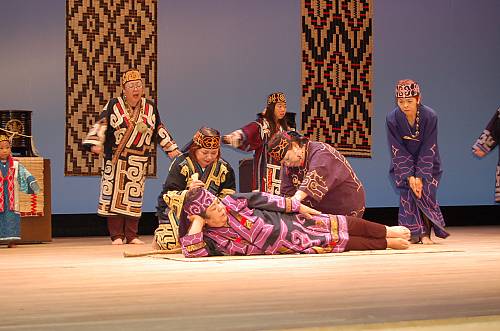Traditional Ainu dance
Inscribed in 2009 (4.COM) on the Representative List of the Intangible Cultural Heritage of Humanity
The Ainu are an indigenous people who today live mostly in Hokkaidō in northern Japan. Traditional Ainu dance is performed at ceremonies and banquets, as part of newly organized cultural festivals and privately in daily life; in its various forms, it is closely connected to the lifestyle and religion of the Ainu. The traditional style involves a large circle of dancers, sometimes with onlookers who sing an accompaniment without musical instrumentation. Some dances imitate the calls and movements of animals or insects; others, like the sword and bow dances, are rituals; and still others are improvisational or purely entertainment. Believing that deities can be found in their surroundings, the Ainu frequently use dance to worship and give thanks for nature. Dance also plays a central role in formal ceremonies such as Iyomante, in which participants send the deity embodied in a bear they have eaten back to heaven by mimicking the movements of a living bear. For the Ainu, dance reinforces their connection to the natural and religious world and provides a link to other Arctic cultures in Russia and North America.










